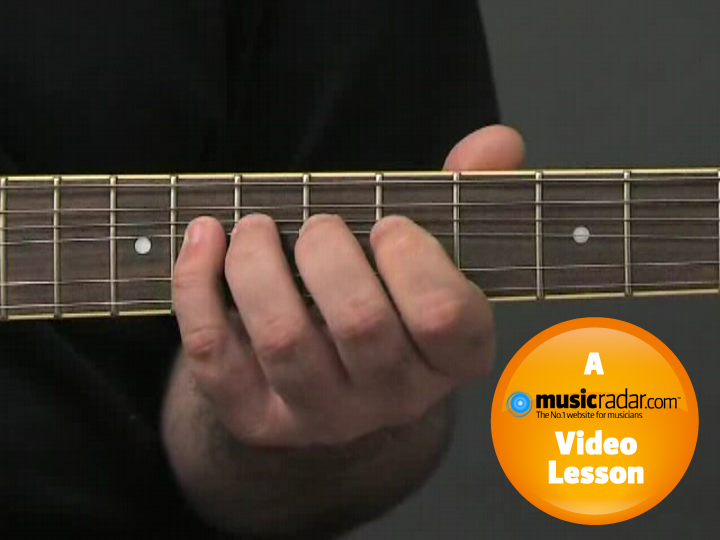Blues scale string bending for beginners

In this beginners' video lesson, we show you how to string bend within the blues scale.
After the minor pentatonic scale, the blues scale is one of the most common scales found in guitar music. It's almost identical to its minor pentatonic cousin too, with just one additional note.
The extra note (called a 'flat 5th' for reasons too complex to explain here) creates a short sequence of three notes that are all one fret (called a 'semitone') apart. These notes are shown in Example 1 on the next page. This short run of semitones gives you a great chance to try out some bluesy bends.
In each case you should bend the string so that it sounds like you're playing one fret higher. This is tricky at first and needs a fair bit of control. If you're not sure how hard to push the string as you bend it, try playing the higher note first. This gives you a chance to hear how the note you're bending to should sound.
Next page: tab for the video examples
Example 1: blues scale

Use your first finger for the 5th fret notes, your second finger for the 6th fret notes, your third finger for the 7th fret notes and your fourth finger for the 8th fret notes.
(Click tab to enlarge)
Example 2: blues scale string bend solo

For each bend place your finger at the fret indicated by the small number. The 'virtual' fret you're bending up to is shown in brackets.
Get the MusicRadar Newsletter
Want all the hottest music and gear news, reviews, deals, features and more, direct to your inbox? Sign up here.
(Click tab to enlarge)
Total Guitar is Europe's best-selling guitar magazine.
Every month we feature interviews with the biggest names and hottest new acts in guitar land, plus Guest Lessons from the stars.
Finally, our Rocked & Rated section is the place to go for reviews, round-ups and help setting up your guitars and gear.
Subscribe: http://bit.ly/totalguitar











